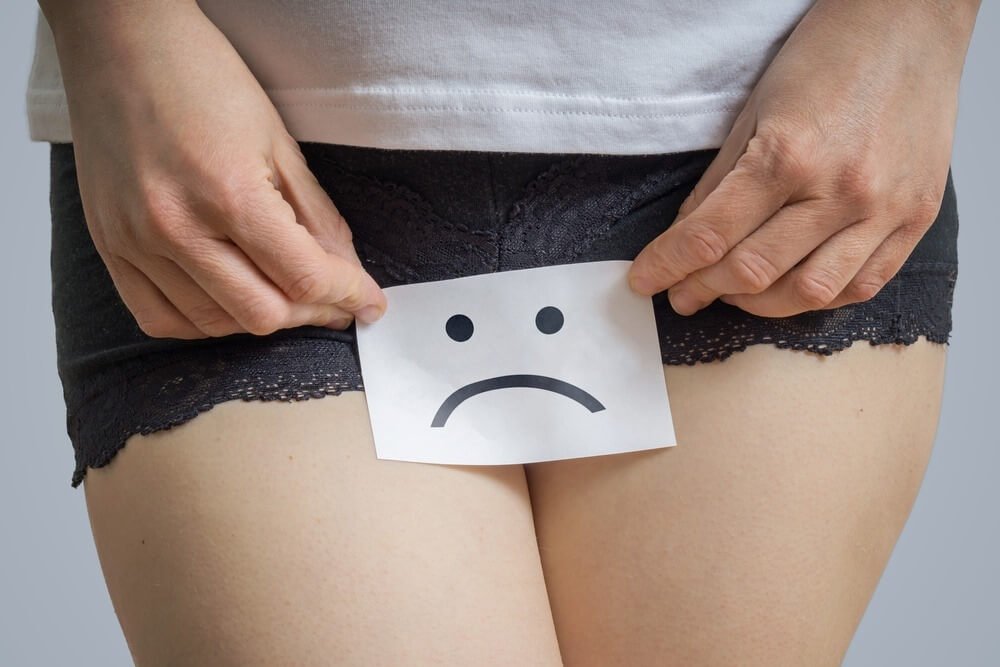5 Steps To Overcome A Yeast Infection - Even If You’ve Tried Everything Else
Updated: May 8th, 2024
Vulvovaginal candidiasis (VVC), or more commonly known as a yeast infection, is the second most common cause of vaginitis {inflammation in the vaginal area} in the US.¹
It's caused by the fungus Candida albicans, however, other species are becoming increasingly common.
The itching caused by this yeast can be annoying and very uncomfortable.
Thankfully, addressing your gut health, removing parasites, and introducing herbal medicine can reduce these symptoms and get you back to feeling well again - fast.
But, wait up.
There are two other types of vaginitis;
Bacterial Vaginosis {when your vaginal PH<4.5}
Trichomoniasis also causes itching and discharge
so you may want to see your doctor and get a fungal culture to make sure, especially if you are pregnant.
So, what are the symptoms you are looking for?
Yeast Infection Symptoms
The smell of yeast may be the first indicator that you notice.
Next may be mild to severe itching and irritation of the vulva area.
You also may notice the vulva is red from scratching; which you want to try to avoid.
Plus **two unique symptoms include:
Craving for alcohol or sugar due to the yeast***
Vestibulodynia is an inflammation in the vestibule due to an allergen!
Plus, you may notice one or more of these symptoms
inflammation
burning
itching
irritation
swelling
pain with urinating {Dysuria}
thick, whitish, vaginal discharge
yeast-like odor
it started during menopause
it happens monthly
vaginal PH normal
““Your gut health, parasites, and digestion can also affect the number of yeast infections you have in a lifetime. After each round of antibiotics, you’ll want to take probiotics for 3 months afterward!” ”
Yeast Infection Discharge
Look for curdy, whitish-to-yellowish discharge
You may have no order or smell similar to yeast bread
You may have redness from itching
If you were to test your PH, it would be normal
What causes these repeated infections?
Yeast Infection causes
Repeated antibiotic use
Sex and the products you’re using and/or oral - you’re passing bacteria to each other
Diabetes mellitus
HIV infection/AIDS
Increase estrogen levels {HRT}
Pregnancy
Hyperglycemia
Allergies
Mold Toxicity
Medications
And.. anything that disrupts the vaginal flora such as:
Antibiotics
Use of tampons, sponges, douches, intrauterine devices, and sex toys
Sexual practices or new partners
IUD, spermicide
Rise in PH
Decline in lactobacillus
Lack of hydrogen peroxide
Hot tubs
Sexual abuse
Yeast Infection Home Remedies
I like to take a five-step approach when treating a yeast infection. Follow these four steps to reduce the number of yeast infections you experience.
#1 Take an antimicrobial internally
Consider taking these herbs internally to reduce infection and inflammation. You can purchase these as a tincture or supplement.
I prefer the tinctures typically, but powdered supplements are handy as it combine a variety of herbs.
Dosing: 20-60 drops total 2-3x day
Look for these herbal tinctures:
Echinacea
Garlic
Astragalus
Goldenseal
Oregano
Thyme
Various mushrooms like Reishi
Check with your doctor if you're nursing and taking herbal remedies.
#2 Internally take an adaptogen to boost immunity and resistance
Best Adaptogens
Eleuthero
Ginseng
Schizandra
Ashwagandha
Reishi
There are so many beautiful Adaptogen blends out on the market.
>>Check out your Fullscript Store under the Yeast Infection catalog to see the products I know, love, and trust!
#3 Internally address your gut health
Reduce sugar and alcohol immediately
You may consider stopping dairy for a week to see if it clears up your digestion {i.e. constipation} and reduces the itching
Focus on greens, whole vegetables fruits and whole grains
Add a probiotic with Lactobacillus rhamnosus in it daily for three months {source} like Integrative Therapeutics Pro-Flora Women's Probiotic - Lactobacillus rhamnosus
#4 Externally apply botanicals to reduce inflammation.
DIY Yoni Wash Recipe
Make a cup of strong Calendula tea
Strain & Cool
Add 1-2 drops of Lavender essential oil & 1-2 tsp. of tea tree essential oil
Place in a Peri-rinse bottle like this one
Rinse the vaginal area 2-3x a day
Optional: Apply a healing salve with Calendula if you're feeling dry, red, and irritated.
2. Insert a vaginal boric acid suppository
Products like Yeast Arrest or Honey Pot can be inserted after sex or when you feel itchy. Often this is during a time of high sugar, around your period, or after sex; when your vaginal microbiome is more acidic.
#5 Clear the Mold
If you live in a house with mold or have inhaled it before - you probably have mold toxicity. The mold lives within your lungs and affects your pelvic floor bacteria.
I’ve never tried it, but Evvy offers testing that includes mold>>Check it out here
My doctor gave me an inhalation of glutathione, but it’s hard to get.
What you can try is
A. Dr. Jess's healing protocol; which is Kill, Bind, Sweat.
Use antimicrobials over a full moon for 4 days
Use binders to eliminate the parasites and yeast
Sweat with a sauna for 3-4 days
B. Cellcore Step #1 and Step #2- Schedule a call with Tara to learn more about this
“Candida, Mold, and Parasites work hand in hand. To eradicate recurring yeast infections - you’ll want to explore a parasite detox when you’re ready. More on this soon...”
How to use garlic for a yeast infection
Garlic is a wise woman's popular herbal remedy.
How do you use it?
Take a fresh, single clove-peeled
Carefully insert nightly and leave overnight
You could dip it into vegetable oil to ease insertion if you needed
Garlic is effective against the fungi E. coli, Proteus, Mycobacterium, and Candida species, but you may notice a garlicky smell!! And...Watch for irritation or even chemical burns on sensitive skin.
How to use yogurt for a yeast infection
Yogurt could be a quick fix for your itchiness if you don’t have anything else in the house.
The probiotics, help neutralize the yeast.
You’d apply it externally and put on a panty liner to catch the extra.
But!! They now make more comfortable suppositories that you would insert at night with a panytliner and it will fall out in the morning.
Sex and Yeast Infections
It’s common to pass bacteria back and forth to one another and keeping your vaginal microbiome is key in healing the itch.
Use a natural company, like Sustain for lube and condoms so you don’t change your vaginal microbiome.
Insert a vaginal suppository, like I mentioned in Step #4.
Conclusion
Medications, antibiotics, and the use of tampons and vaginal lubricants can all affect the healthy flora in the vaginal area causing recurring yeast infections. Addressing your gut health and integrating more natural products, could be the number one way to stop this irritating cycle.
Click below to see my favorite products to reduce yeast infections and urinary tract infections for years to come.
As UTIs and yeast go hand in hand, read this post to learn about natural remedies for a Urinary tract infection: https://taragregorio.com/5-steps-to-stop-a-uti-naturally/
xo Tara
P.S. Ready to overcome this naturally? Book a health consultation with Tara.
References
¹ Romm, Aviva; Botanical Medicine for Women's Health pg. 258
https://www.ncbi.nlm.nih.gov/pmc/articles/PMC5658588/

